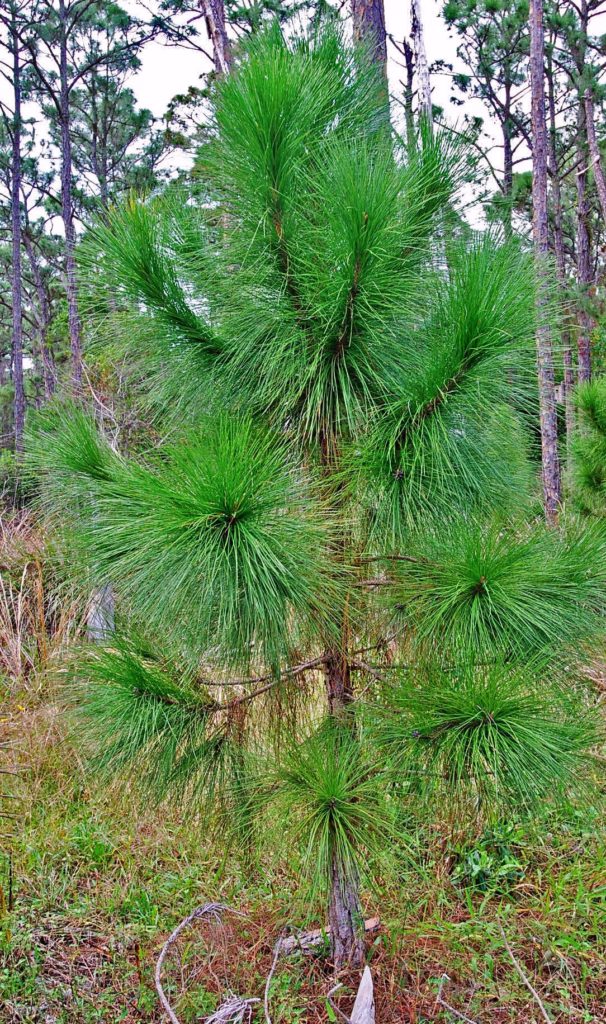
South Florida Slash Pine
Pinus elliottii
From the mid peninsula to the Florida Keys, South Florida Slash Pine was the dominant tree in South Florida before the arrival of Europeans. Not to be confused with the North Florida variety which does poorly in South Florida soils and climate.
It is able to grow in soils ranging from periodically wet to very dry and is tolerant of moderate salt air when planted behind coastal trees. The tap root makes this an extremely drought tolerant tree.
Although hurricanes have damaged yard trees that were weakened by over watering, most naturally occurring trees tolerated the high winds with minimal damage.
The leaves, which come in 2’s and 3’s, can be up to 12 inches long and give the young plants a bushy appearance. Many insects feed on the foliage and seeds or live in the bark and dead wood.
These insects provide food for many bird species, especially woodpeckers and warblers. The cones are filled with oblong, lentil sized seeds which are food for birds and squirrels.
Every yard in South Florida should have at least one of these trees in it. This would recreate the habitat that historically supported much of our wildlife.
The tall Slash Pines enable birds to move through the area without being exposed to predators. Even a dead pine provides nest sites for woodpeckers, osprey, and other creatures.
Under plant with saw Palmetto, Coontie, Beautyberry, Andropogon Grasses and other native grasses and wildflowers or just let the needles fall on bare ground.
If you must have lawn grass under this tree, do not water or you will weaken and possibly kill your pines. Lawn should be reduced to small areas of drought tolerant species or replaced with mulch.
The soil is more moist and shaded under the pines, so watering should not be needed. Do not bag the needles as they add organic matter to the soil.
Try to rake the needles under the tree for a grass free area. This will help keep the soil ph low and you won’t have to drive the mower over the trees’ roots.
Imagine our communities connected by Slash Pines, broken by areas of various types of hammocks (oak, coastal, wetland) and cypress domes, or expanses of native grasses and wildflowers. Restoring these habitats would result in an increase in our bird populations.
What if we didn’t have to worry about water use, salt water intrusion or pollution of our aquifer by lawn chemicals? We could also enjoy quiet summer months with the lawn mowers, weed eaters, blowers etc. sitting idle.